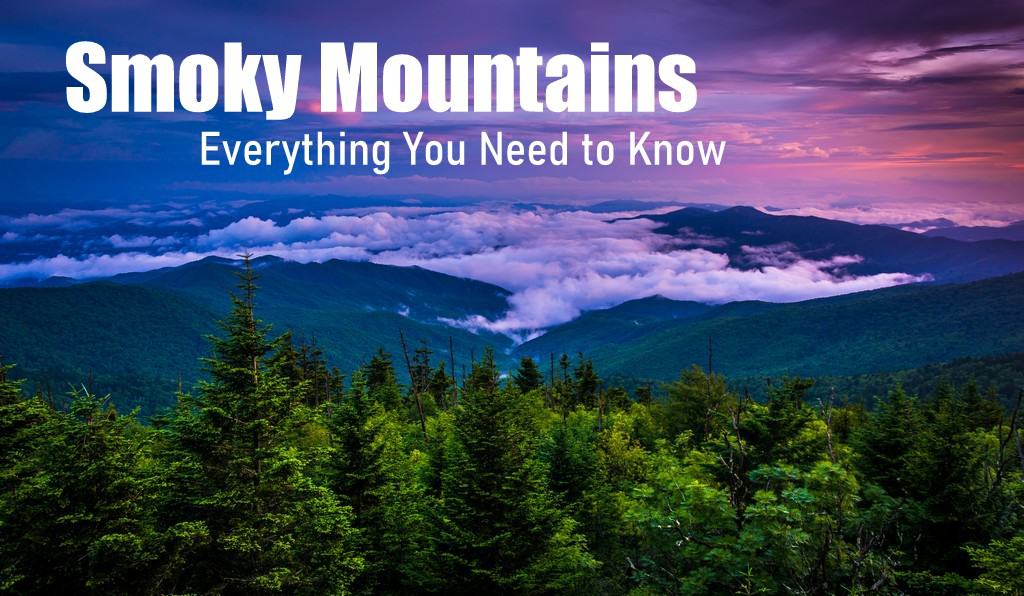
Where are the Smoky Mountains?
The Great Smoky Mountains, often referred to as the Smokies, are situated in the southeastern region of the United States.
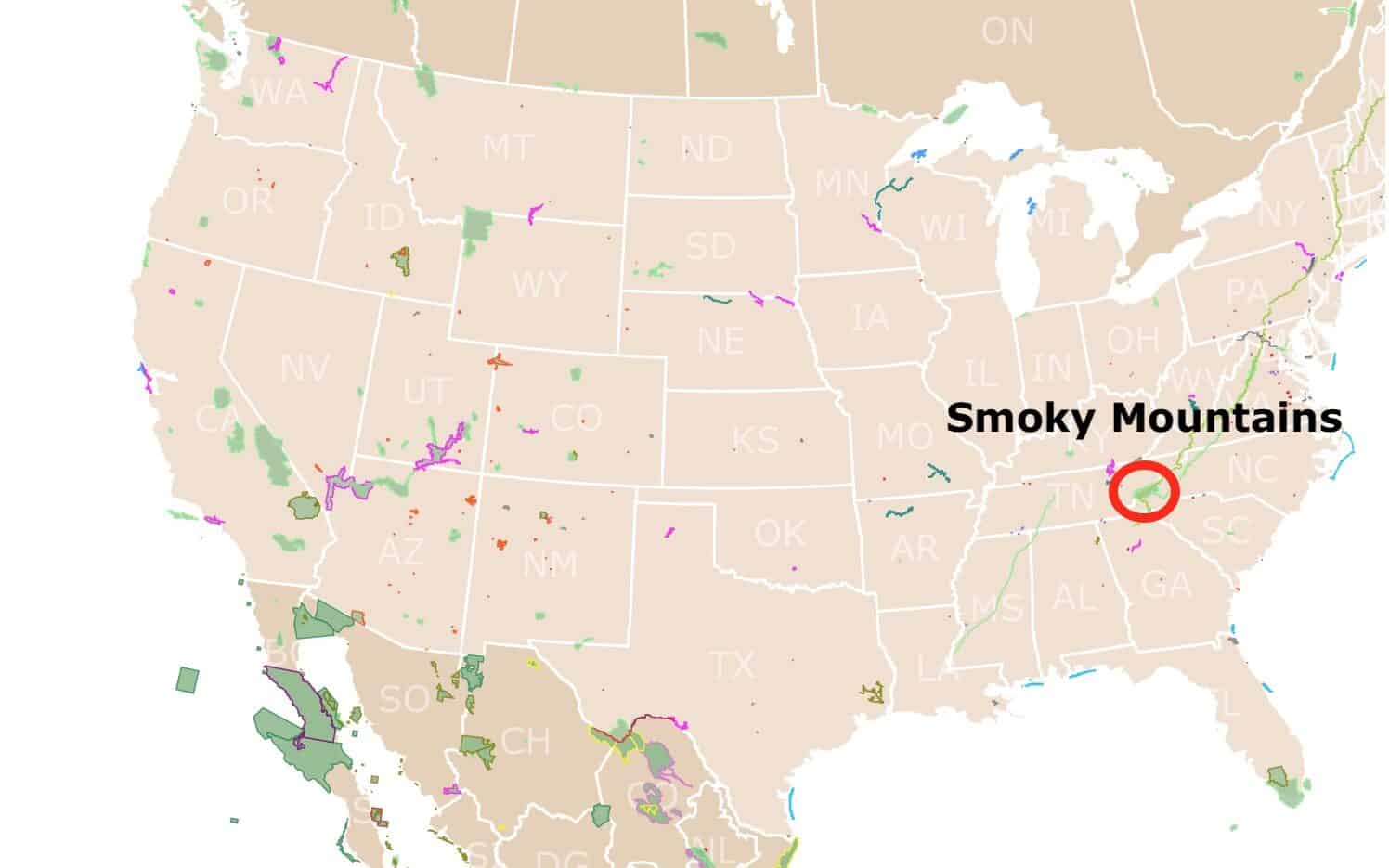
Are the Smoky Mountains and the Blue Ridge Mountains the Same?
Yes and no. The Smokies are a subrange of the Blue Ridge Mountain System. So, the Smokies are the Blue Ridge Mountains, but not all of the Blue Ridge Mountains are Smoky Mountains.
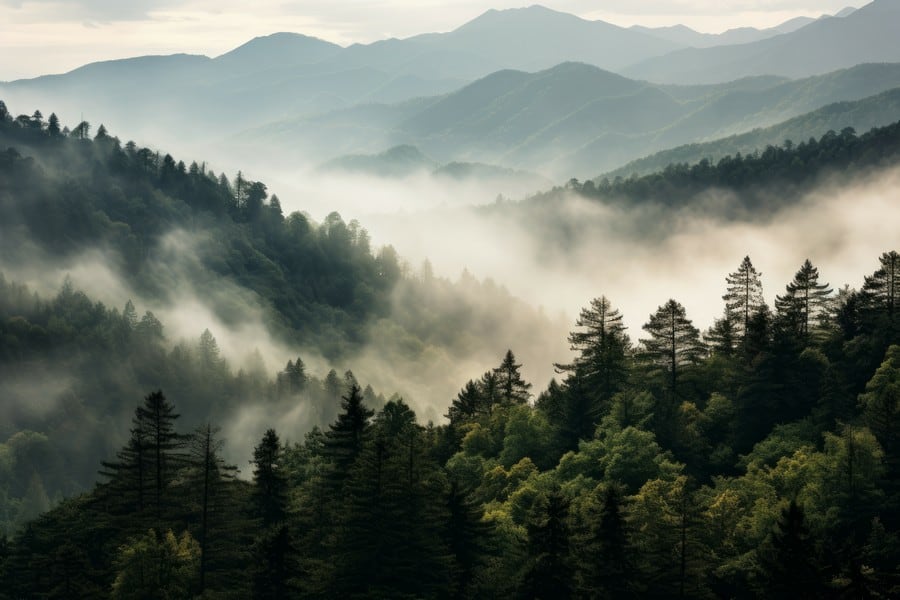
Are the Smoky Mountains Part of the Appalachian Range?
Yes, the Smoky Mountains (and the Blue Ridge Mountains) are part of the larger Appalachian Mountain chain that stretches along the eastern United States.
Do the Smoky Mountains Have Any Designations?
Great Smoky Mountains National Park was established in 1934. The park was designated a UNESCO World Heritage Site in 1983 and an International Biosphere Reserve in 1988.
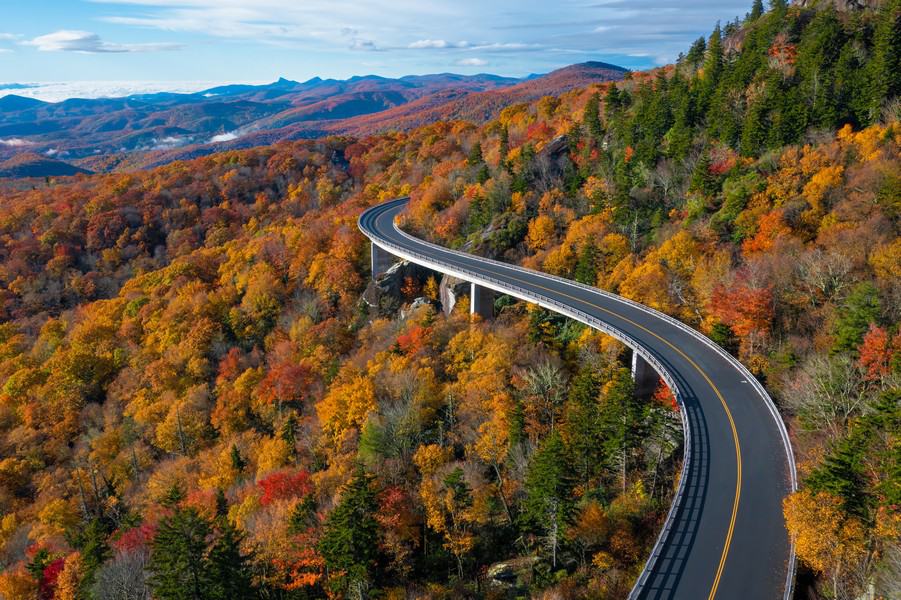
How Big and Tall are the Smoky Mountains?
Great Smoky Mountain National Park is 19 miles (31 km) wide and 54 miles (87 km) long. It covers an area of approximately 522,000 acres or 816 square miles, 244,000 acres of which are in Tennessee and 276,000 acres in North Carolina. It is one of the largest protected areas in the eastern United States.
In terms of height, the highest peak in the Great Smoky Mountains is Clingmans Dome, standing at an elevation of 6,643 feet (2,025 meters) above sea level. Multiple other peaks within the range exceed 6,000 feet (1,829 meters).
What States are the Smoky Mountains in?
The Smoky Mountains are located in only two states, Tennessee and North Carolina.
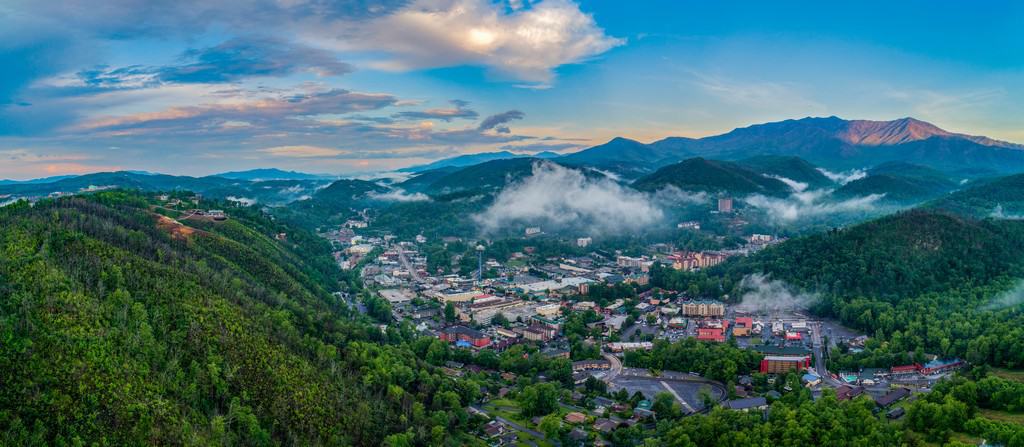
Where Do the Smoky Mountains Start and End?
The Smoky Mountains begin in the northeastern tip of Tennessee and reach into the western part of North Carolina, extending over a broad expanse of the Appalachian region.
Why are They Called Smoky Mountains?
The Smoky Mountains got their name from the smoky mist that often blankets the valleys and peaks of the region. This mist or fog is the result of a natural phenomenon wherein organic compounds emitted by the abundant vegetation, combined with moisture and low-level clouds, create the hazy and misty appearance.
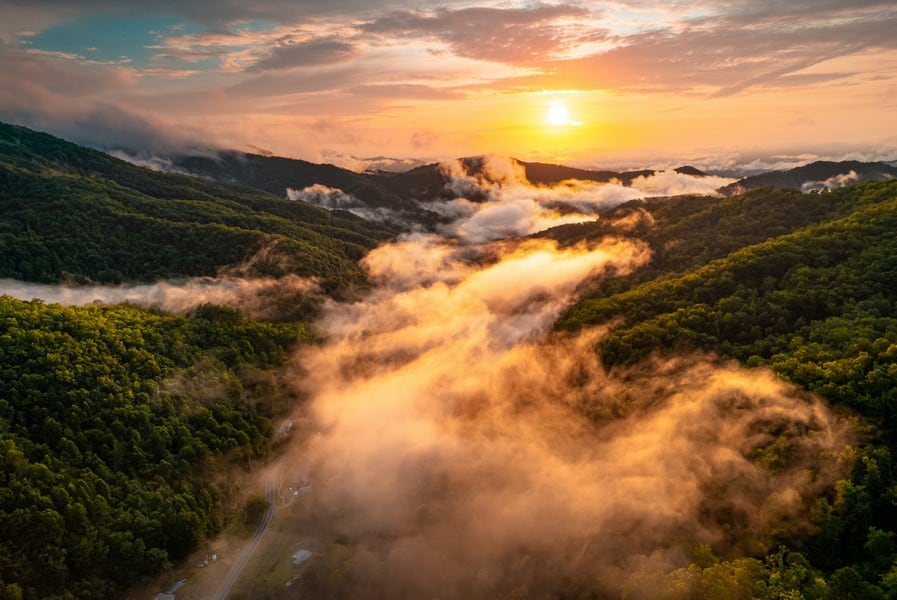
The dense forests, predominantly made up of evergreen trees such as spruce and fir, release volatile organic compounds called terpenes. These compounds, combined with the moisture in the air, can scatter light and create the distinctive blue-hued smoky appearance that gives the mountains their name.
Especially in the mornings and evenings, when the temperature, humidity, and sunlight conditions are just right, this phenomenon is more pronounced, leading to the ethereal and smoky-like appearance that shrouds the Great Smoky Mountains.
How Did the Smoky Mountains Form?
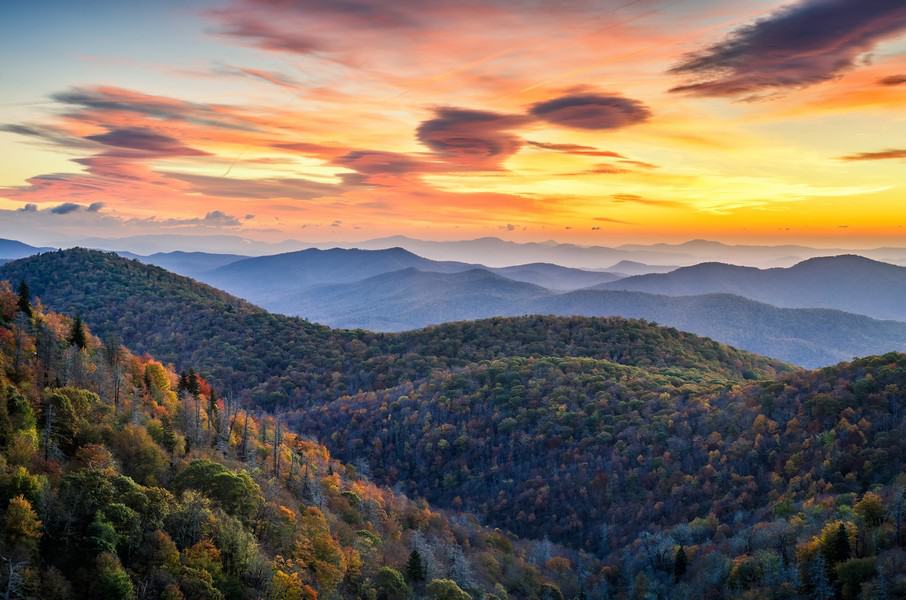
The Smoky Mountains are ancient formations, dating back millions of years. Their development began around 200 million years ago due to the shifting of tectonic plates during the Paleozoic Era. The movement of the North American Plate and the African Plate resulted in the folding of rock layers that gave rise to the Smoky Mountains.
The Smokies are primarily composed of softer sedimentary rock types, such as sandstone and shale, which are more susceptible to erosion. This characteristic accounts for the smooth, rounded appearance of some of the peaks and contributes to the haze or “smoke” that often envelops the mountains.
What are the Most Famous Features of the Smoky Mountains?

The Smoky Mountains have many notable landmarks and natural attractions:
- Great Smoky Mountains National Park: Renowned for its biodiversity, scenic beauty, and the Appalachian Trail passing through it.
- Clingmans Dome: The highest point in the Smokies at 6,643 feet tall, providing panoramic views of the surrounding landscape.
- Chimney Tops: A pair of prominent peaks with stunning views and challenging hiking trails.
- Roaring Fork Motor Nature Trail: A scenic drive showcasing waterfalls, historical sites, and diverse wildlife.
- Cades Cove: A picturesque valley offering wildlife viewing, historic structures, and scenic beauty.
- Alum Cave Trail: Known for its diverse landscapes, including a natural arch, streams, and panoramic views.
- Newfound Gap: A popular mountain pass offering breathtaking views and a marker for the state line between Tennessee and North Carolina.
- Rainbow Falls: A stunning waterfall accessible via a hiking trail known for its rainbow-like mist.
- LeConte Lodge: The highest guest lodge in the eastern United States, accessible only by hiking.
- Laurel Falls: A picturesque waterfall with an accessible trail suitable for all skill levels.
- Abrams Falls: A picturesque waterfall along Abrams Creek with a large volume of water flowing over a rocky ledge.
- Fontana Dam: An impressive engineering feat and the tallest dam in the Eastern United States, offering scenic views of Fontana Lake.
- Grotto Falls: A unique waterfall that hikers can walk behind, accessible via the Trillium Gap Trail.
- Great Smoky Mountains Railroad: A scenic train ride offering views of the mountains and valleys.
- Oconaluftee River Trail: A picturesque trail following the river, showcasing diverse flora and wildlife.
- Mingo Falls: A stunning 120-foot waterfall located on the Cherokee Indian Reservation.
- Deep Creek: A popular area for tubing, hiking, and exploring waterfalls.
- Little River Road: A scenic drive following the course of the Little River with picturesque views and access to various trails.
- Spruce Flats Falls: A hidden gem accessed by a moderate hike, leading to a beautiful cascade.
- Juney Whank Falls: A pair of picturesque waterfalls accessed by a loop trail near Deep Creek.
- Porters Creek Trail: A scenic trail featuring diverse flora and historic sites.
What are Famous Hikes in the Great Smoky Mountains
Offering an extensive network of trails, the Great Smoky Mountains National Park caters to hikers of varying skill levels. Notable hikes include the Alum Cave Trail leading to stunning vistas, the challenging trek up to Clingmans Dome, and the picturesque Roaring Fork Motor Nature Trail showcasing the park’s scenic beauty.
Visitors can also embark on the famed Appalachian Trail, which traverses through the park, providing hikers with an opportunity to experience a portion of this iconic long-distance trail.
How Many People Visit the Smoky Mountains?
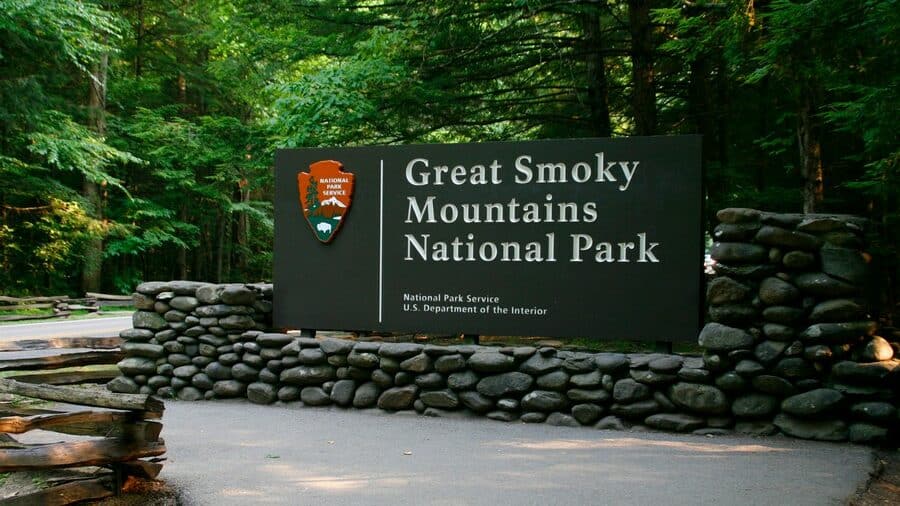
Great Smoky Mountains National Park is the most visited national park in America. More than 11 million people visit every year.
What is the Weather Like in the Smoky Mountains?
The weather in the Smoky Mountains can vary significantly based on elevation and season. Summers are typically warm and humid, with temperatures averaging between 70°F to 90°F (21°C to 32°C). Winters are relatively mild, with temperatures ranging from 20°F to 50°F (-6°C to 10°C) in the lower elevations and dropping lower at higher elevations, sometimes leading to snowfall.
When is the Best Time to Visit the Smoky Mountains?
The best time to visit the Great Smoky Mountains largely depends on the type of experience you seek.
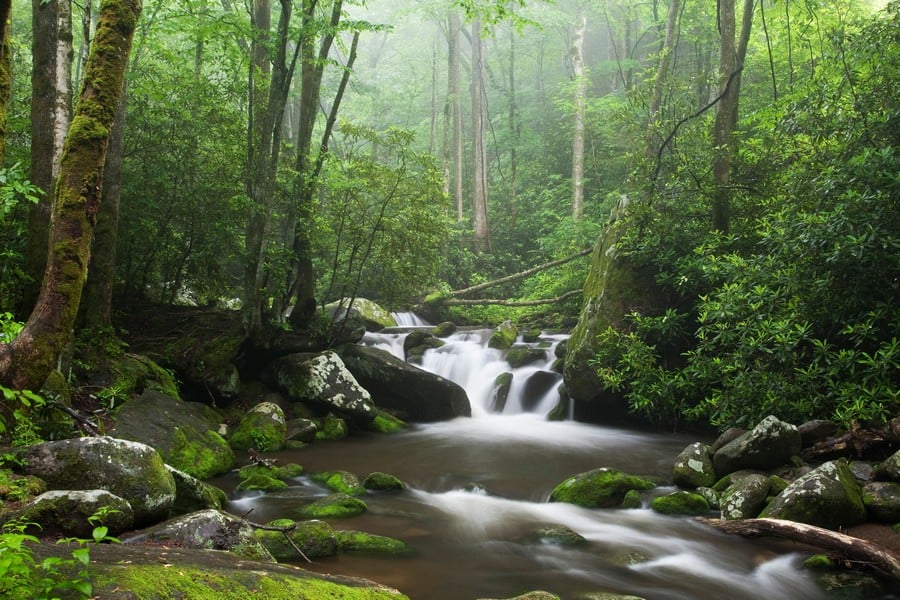
Spring (March to May): This season offers blooming wildflowers, especially in April and May. The weather is generally mild, and it’s a good time for hiking, wildlife viewing, and enjoying the fresh foliage.
Summer (June to August): This season is the peak tourist period due to summer vacation. The weather is warm, with occasional afternoon showers. It’s great for activities like hiking, camping, and exploring the park’s diverse ecosystems.
Fall (September to November): Fall is immensely popular due to the vibrant foliage. The trees, particularly the sugar maples and hickories, showcase breathtaking colors, drawing many visitors. Early to mid-October is usually the peak of fall foliage.
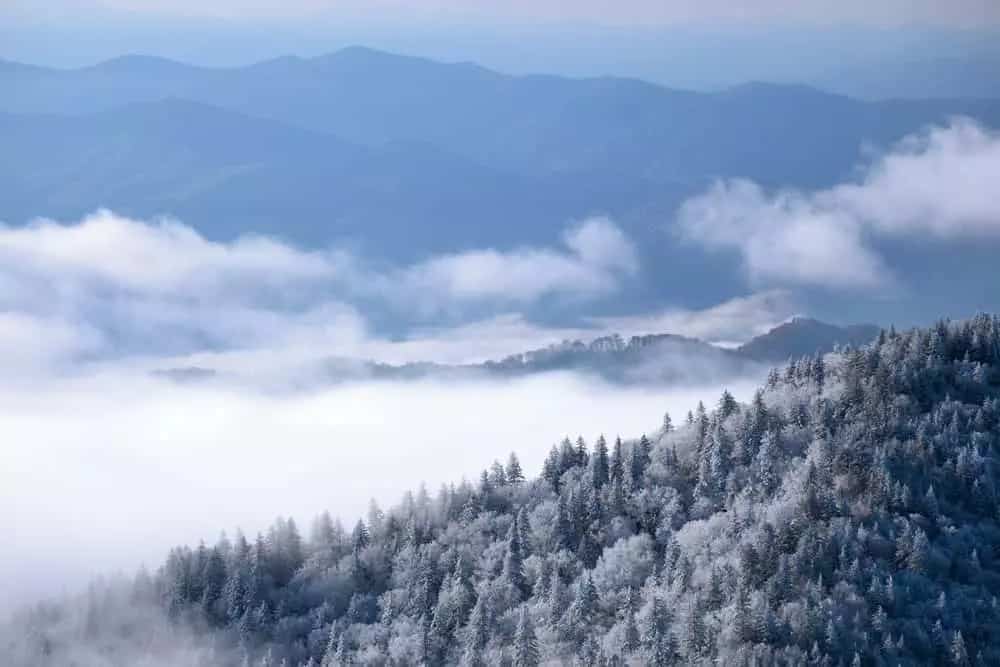
Winter (December to February): Winter months are quieter in terms of tourists. While some areas might close due to snow, it’s an excellent time for peaceful walks, wildlife spotting, and, occasionally, snow-based activities at higher elevations.
What Animals Can Be Found in the Smoky Mountains?
The Smoky Mountains are home to a diverse range of wildlife, including black bears, white-tailed deer, elk, wild turkeys, boars, red and gray foxes, river otters, salamanders, bobcats, and various bird species.

What Plant Life Can Be Found in the Smoky Mountains?
The Smoky Mountains boast a rich variety of plant life, from lush forests to high-elevation meadows. The region hosts a diverse array of flora, including flowering plants, hardwood trees like oak and hickory, conifers such as spruce and fir, and vibrant wildflowers like trillium and rhododendron.
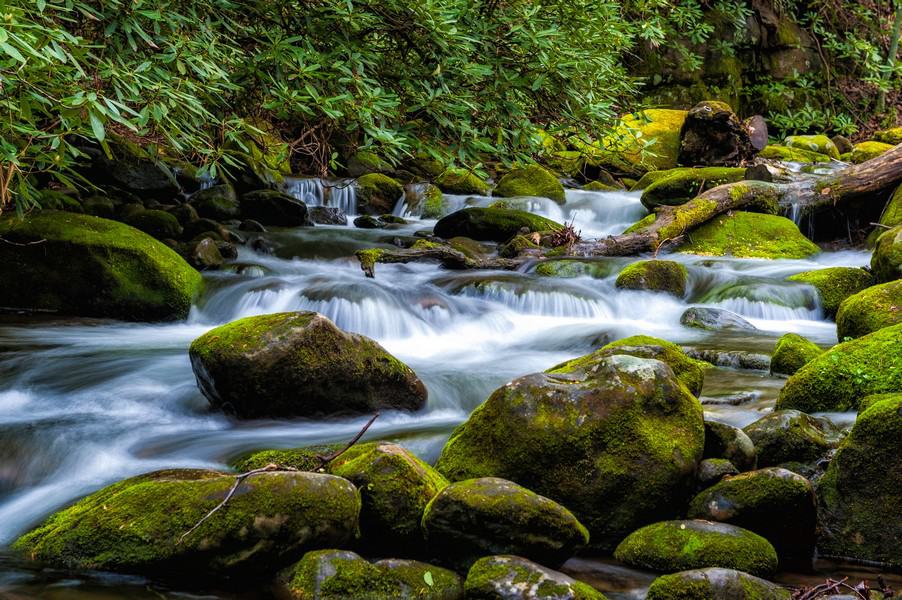
Who Lived in the Smoky Mountains?
The Smoky Mountains were historically inhabited by indigenous peoples, including the Cherokee, who had a deep cultural connection to the land. European settlers later migrated to the region, leading to significant cultural shifts and changes in the landscape.
The Smokies hold historical significance as the ancestral homeland of the Cherokee people, whose traditions, spirituality, and way of life were intricately tied to the mountains. Today, Cherokee culture and heritage remain an integral part of the Smoky Mountains’ identity.
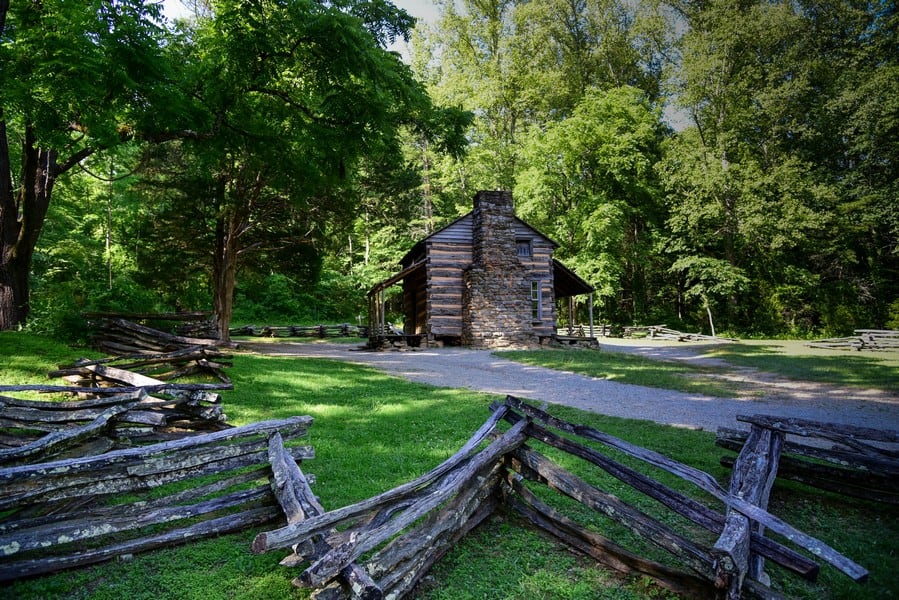
The region’s history, cultural heritage, and natural beauty continue to attract visitors seeking to explore and appreciate the wonders of the Great Smoky Mountains.




























































